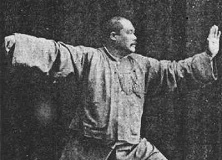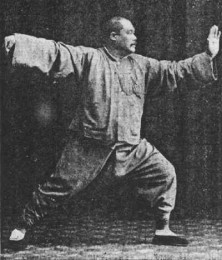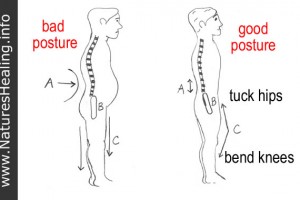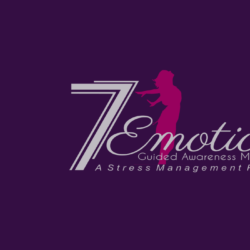- Arthritis
- Attention Deficit Disorder
- Balance
- Blood Pressure
- Cardiovascular
- Cortisol
- Elderly
- Exercise
- Strength
- Technique
Arthritis
Kirsteins, A. E., Dietz, F., and Hwang, S. M.(1991).Evaluating the safety and potential use of a weight-bearing exercise, Tai-Chi Chuan, for rheumatoid arthritis patients. American Journal of Physical Medicine & Rehabilitation 70(3), 136-141.
Abstract: The safety of a traditional Chinese exercise, Tai-Chi Chuan, on rheumatoid arthritis (RA) patients was evaluated. RA patients, who received 1 h of Tai-Chi Chuan instruction once (n = 20) and twice (n = 15) a week for 10 consecutive wk in two separate studies, showed no deterioration in their clinical disease activities compared with the corresponding controls (n = 11 and 9, respectively). Testing parameters included joint tenderness, joint swelling, time to walk 50 feet, handgrip strength and a written functional assessment. No significant exacerbation of joint symptoms using this weight-bearing form of exercise was observed. Tai-Chi Chuan exercise appears to be safe for RA patients and may serve as an alternative for their exercise therapy and part of their rehabilitation program. Weight-bearing exercises have the potential advantages of stimulating bone growth and strengthening connective tissue, but this effect needs to be documented in long-term studies
Attention Deficit Disorder
Hernandez-Reif, M., Field, T., & Thimas, E. (2001). Attention deficit hyperactivity disorder: benefits from Tai Chi. Journal of Bodywork and Movement Therapies, 5, 120-123.
Abstract: Thirteen adolescents with Attention Deficit Hyperactivity Disorder (ADHD) participated in Tai Chi classes twice a week for 5 weeks. Teachers rated the children’s behaviour on the Conners Scale during the baseline period, after the 5 week Tai Chi session period and 2 weeks later. After the 10 Tai Chi sessions the adolescents displayed less anxiety, improved conduct, less daydreaming behaviours, less inappropriate emotions, and less hyperactivity. These improved scores persisted over the 2-week follow up (no Tai Chi period).
Balance
Van Deusen, J. and Harlowe, D. (1987).The efficacy of the ROM Dance Program for adults with rheumatoid arthritis. American Journal of Occupational Therapy 41(2), 90-95.
Abstract: This study examined the efficacy of an exercise and relaxation program for adults with rheumatoid arthritis. The program integrates principles of occupational therapy and T’ai-Chi Ch’uan and was expected to be more effective than traditional exercise and rest regimens because of its expressive and pleasurable elements. There were significant differences between 17 experimental and 16 control subjects on two categories of dependent variables after the former group’s participation in the experimental program. These dependent variables were range of motion measures and subject self-reports of frequency, enjoyment, and benefits of home exercise and rest routines. Pretest, posttest, and 4-month follow-up data were analyzed. Program participants showed significantly greater upper extremity range of motion 4 months after completing the program although the reported frequency of exercise and rest was greater in the control group. Postprogram reports of enjoyment were significantly higher for experimental than for control subjects. If these initial results are confirmed in further studies, the efficacy of the use of purposeful activity for exercise and rest will be supported. This study also supports the integration of Eastern and Western frames of reference in the treatment of patients with chronic illness
Tse, S. K. and Bailey, D. M. T’ai chi and postural control in the well elderly. (1998). American Journal of Occupational Therapy 46(4), 295-300.
Abstract: In this study, we investigated the potential value of t’ai chi in promoting postural control of the well elderly. T’ai chi, a traditional Chinese exercise, is a series of individual dancelike movements linked together in a continuous, smooth-flowing sequence. Performance on five balance tests of 9 t’ai chi practitioners was compared to that of 9 nonpractitioners. An analysis of variance demonstrated that in three of the tests, the t’ai chi practitioners had significantly better postural control than the sedentary nonpractitioners (p less than .05). It was also found that men performed significantly better than women in both the practitioner and non-practitioner groups on the same three tests (p less than .01)
Judge, J. O., Lindsey, C., Underwood, M., and Winsemius, D.(1993). Balance improvements in older women: effects of exercise training. Physical Therapy, 73(4), 254-262.
Abstract: BACKGROUND AND PURPOSE. Loss of lower-extremity strength increases the risk of falls in older persons. The purpose of this study was to test the hypothesis that a vigorous program of lower-extremity strengthening, walking, and postural control exercises would improve the single-stance balance of healthy older women and lower their risk of falls and fall-associated injuries. SUBJECTS. From a total of 38 respondents, 21 women were randomly assigned to either a treatment group (combined training, n = 12) or a control group (flexibility training, n = 9). The subjects ranged in age from 62 to 75 years (mean = 68, SD = 3.5). METHODS. A randomized control trial compared the effects of two exercise programs on static balance. The combined training group exercised three times per week on knee extension and sitting leg press machines, walked briskly for 20 minutes, and performed postural control exercises, which included simple tai chi movements. The flexibility training group performed postural control exercises weekly. Measurements of balance were obtained on a force platform in double and single stance, at baseline and following 6 months of exercise training. RESULTS. Double-stance measurements were unchanged after training. The mean displacement of the center of pressure in single stance improved 17% in the combined training group and did not change in the flexibility training group. A repeated-measures analysis of variance revealed that the difference in improvement between the combined training and flexibility training groups was not significant. DISCUSSION AND CONCLUSION. This is the first intervention trial to demonstrate improvements in single-stance postural sway in older women with exercise training. Additional studies with more subjects will be needed to determine whether a combined training program of resistance training, walking, and postural exercises can improve balance more than a program of postural control exercises alone
Province, M. A., Hadley, E. C., Hornbrook, M. C., Lipsitz, L. A., Miller, J. P., Mulrow, C. D., Ory, M. G., Sattin, R. W., Tinetti, M. E., and Wolf, S. L. (1995). The effects of exercise on falls in elderly patients. A preplanned meta-analysis of the FICSIT Trials. Frailty and Injuries: Cooperative Studies of Intervention Techniques [see comments]. JAMA 273(17), 1341-1347.
Abstract: OBJECTIVE–To determine if short-term exercise reduces falls and fall-related injuries in the elderly. DESIGN–A preplanned meta-analysis of the seven Frailty and Injuries: Cooperative Studies of Intervention Techniques (FICSIT)–independent, randomized, controlled clinical trials that assessed intervention efficacy in reducing falls and frailty in elderly patients. All included an exercise component for 10 to 36 weeks. Fall and injury follow-up was obtained for up to 2 to 4 years. SETTING–Two nursing home and five community-dwelling (three health maintenance organizations) sites. Six were group and center based; one was conducted at home. PARTICIPANTS–Numbers of participants ranged from 100 to 1323 per study. Subjects were mostly ambulatory and cognitively intact, with minimum ages of 60 to 75 years, although some studies required additional deficits, such as functionally dependent in two or more activities of daily living, balance deficits or lower extremity weakness, or high risk of falling. INTERVENTIONS–Exercise components varied across studies in character, duration, frequency, and intensity. Training was performed in one area or more of endurance, flexibility, balance platform, Tai Chi (dynamic balance), and resistance. Several treatment arms included additional nonexercise components, such as behavioral components, medication changes, education, functional activity, or nutritional supplements. MAIN OUTCOME MEASURES–Time to each fall (fall-related injury) by self-report and/or medical records. RESULTS–Using the Andersen-Gill extension of the Cox model that allows multiple fall outcomes per patient, the adjusted fall incidence ratio for treatment arms including general exercise was 0.90 (95% confidence limits [CL], 0.81, 0.99) and for those including balance was 0.83 (95% CL, 0.70, 0.98). No exercise component was significant for injurious falls, but power was low to detect this outcome. CONCLUSIONS–Treatments including exercise for elderly adults reduce the risk of falls
Wolfson, L., Whipple, R., Derby, C., Judge, J., King, M., Amerman, P., Schmidt, J., and Smyers, D. (1996). Balance and strength training in older adults: intervention gains and Tai Chi maintenance [see comments]. Journal of the American Geriatrics Society, 44(5), 498-506.
Abstract: OBJECTIVE: To determine the effect on balance and strength of 3 months of intensive balance and/or weight training followed by 6 months of low intensity Tai Chi training for maintenance of gains. DESIGN: Randomized control intervention. Four groups in 2 x 2 design: Control, Balance, Strength, Balance + Strength, using blinded testers. SETTING: Exercise and balance laboratory at University of Connecticut Health Center. PARTICIPANTS: Subjects were 110 healthy community dwellers (mean age 80) who were free of dementia, neurological disease, and serious cardiovascular or musculoskeletal conditions. INTERVENTIONS: Short-term training (3 months) occurred 3 times/week (45 minutes Balance and Strength, 90 minutes Balance + Strength). Balance training included equilibrium control exercises of firm and foam surfaces and center-of-pressure biofeedback. Strengthening consisted of lower extremity weight-lifting. All subjects than received long-term group Tai Chi instruction (6 months, 1 hour, 1 time/week). MEASUREMENTS: Losses of balance during Sensory Organization Testing (LOB), single stance time (SST), voluntary limits of stability (FBOS), summed isokinetic torque of eight lower extremity movements (ISOK), and usual gait velocity (GVU). RESULTS AND CONCLUSIONS: Balance training meaningfully improved all balance measures by restoring performance to a level analogous to an individual 3 to 10 years younger: LOB = -2.0 +/- 0.3 (adjusted paired differences, P < .005 ANOVA); SST = 7.0 +/- 1.2 sec; and FBOS = 9.0 +/- 2.0% of foot length (P < .05). Strengthening increased ISOK by 1.1 +/- 0.1 Nm kg-1 (P < .005). There was no interaction between balance and strength training. Significant gains persisted after 6 months of Tai Chi, although there was some decrement
Schaller, K. J. (1996). Tai Chi: an exercise option for older adults. Journal of Gerontological Nursing 22(10), 12-17.
Abstract: The purpose of this study was to determine the effects of Tai Chi on balance, flexibility, mood, health status, and blood pressure in a sample of community-dwelling elders. A quasi-experimental pretest-posttest design was used in the study. Participants were recruited from a senior center located in the suburbs of a large metropolitan area. The experimental group consisted of 24 volunteers over the age of 55 who performed 60 minutes of Tai Chi once a week for 10 weeks and practiced at home. The control group consisted of 22 volunteers who continued with their current level of activity. Analysis of covariance revealed a significant difference between the two groups on balance (F = 4.3, p < .05). This study suggests that Tai Chi is a safe and enjoyable form of exercise that might improve balance in community-dwelling elders
Shih, J. (1997). Basic Beijing twenty-four forms of T’ai Chi exercise and average velocity of sway. Perceptual & Motor Skills, 84(1), 287-290.
Abstract: To examine the effect of 16 weeks of T’ai Chi exercise on the average velocity of sway 11 subjects were pre- and posttested by using the AMTI force platform. Analysis indicated that T’ai Chi exercise was associated with substantial changes in the sway velocities in anterior and posterior directions for the group but was not assessed against any control groups performance. That remains to be evaluated
Wolf, S. L., Barnhart, H. X., Ellison, G. L., and Coogler, C. E. (1997). The effect of Tai Chi Quan and computerized balance training on postural stability in older subjects. Atlanta FICSIT Group. Frailty and Injuries: Cooperative Studies on Intervention Techniques. Physical Therapy, 77(4), 371-381.
Abstract: BACKGROUND AND PURPOSE: This study explored whether two exercise programs would affect the ability to minimize postural sway of 72 relatively inactive, older subjects who participated in the Atlanta FICSIT trial. SUBJECTS: Subjects were randomly assigned to (1) a computerized balance training group, (2) a tai chi group, or (3) an educational group serving as a control for exercise. Each group consisted of 24 members. METHODS: All subjects were evaluated under four postural conditions before, immediately after, and 4 months following their respective interventions, each of which was given over 15 weeks. RESULTS: Platform balance measures revealed greater stability after training among subjects in the balance training group but little change in stability among subjects in the tai chi and educational group. Subjects in the tai chi group were less afraid of falling after training compared with subjects in other groups with similar covariates. CONCLUSION AND DISCUSSION: Unlike computerized balance training, tai chi does not improve measures of postural stability. Because tai chi delayed onset to first or multiple falls in older individuals, this effect does not appear to be associated with measures of enhanced postural stability. Tai chi may gain its success, in part, from promoting confidence without reducing sway rather than primarily facilitating a reduction in sway-based measures
Wolf, S. L., Barnhart, H. X., Kutner, N. G., McNeely, E., Coogler, C., and Xu, T. (1996).Reducing frailty and falls in older persons: an investigation of Tai Chi and computerized balance training. Atlanta FICSIT Group. Frailty and Injuries: Cooperative Studies of Intervention Techniques [see comments]. Journal of the American Geriatrics Society 44(5), 489-497.
Abstract: OBJECTIVE: To evaluate the effects of two exercise approaches, Tai Chi (TC) and computerized balance training (BT), on specified primary outcomes (biomedical, functional, and psychosocial indicators of frailty) and secondary outcomes (occurrence of falls). DESIGN: The Atlanta FICSIT (Frailty and Injuries: Cooperative Studies of Intervention Techniques), a prospective, randomized, controlled clinical trial with three arms (TC, BT, and education [ED]. Intervention length was 15 weeks, with primary outcomes measured before and after intervention and at 4-month follow-up. Falls were monitored continuously throughout the study. SETTING: Persons aged 70 and older living in the community. PARTICIPANTS: A total of 200 participants, 162 women and 38 men; mean age was 76.2. MEASUREMENTS: Biomedical (strength, flexibility, cardiovascular endurance, body composition), functional (IADL), and psychosocial well-being (CES-D scale, fear of falling questionnaire, self-perception of present and future health, mastery index, perceived quality of sleep, and intrusiveness) variables. RESULTS: Grip strength declined in all groups, and lower extremity range of motion showed limited but statistically significant changes. Lowered blood pressure before and after a 12-minute walk was seen following TC participation. Fear of falling responses and intrusiveness responses were reduced after the TC intervention compared with the ED group (P = .046 and P = .058, respectively). After adjusting for fall risk factors, TC was found to reduce the risk of multiple falls by 47.5%. CONCLUSIONS: A moderate TC intervention can impact favorably on defined biomedical and psychosocial indices of frailty. This intervention can also have favorable effects upon the occurrence of falls. Tai Chi warrants further study as an exercise treatment to improve the health of older people
Blood Pressure
Channer, K. S., Barrow, D., Barrow, R., Osborne, M., and Ives, G. (1996).Changes in haemodynamic parameters following Tai Chi Chuan and aerobic exercise in patients recovering from acute myocardial infarction. Postgraduate Medical Journal, 72(848), 349-351.
Abstract: In this study, 126 patients (90 males, average age 56 years, range 39-80) were randomised to Wu Chian-Ch’uan style Tai Chi (38), aerobic exercise (41) or a non-exercise support group (47) following acute myocardial infarction. Patients attended twice weekly for three weeks then weekly for a further five weeks. Heart rate and blood pressure were recorded before and after each session. Over the 11 sessions of exercise there was a negative trend in diastolic blood pressure only in the Tai Chi group (Rs = 0.79, p < 0.01). Significant trends in systolic blood pressure occurred in both exercise groups (Rs = 0.64 and 0.63, both p < 0.05). Only four (8%) patients completed the support group eight-week programme which was less than the number completing Tai Chi (82%; p < 0.001) and aerobic exercise groups (73%; p < 0.001)
Cardiovascular
Brown, D. D., Mucci, W. G., Hetzler, R. K., and Knowlton, R. G. (1989). Cardiovascular and ventilatory responses during formalized T’ai Chi Chuan exercise. Research Quarterly for Exercise & Sport 60(3), 246-250.
Abstract: T’ai Chi Chuan (TCC) is a widely practiced Chinese martial art said to physically develop balance and coordination as well as enhance emotional and mental health. TCC consists of a series of postures combined into a sequential movement providing a smooth, continuous, low-intensity activity. The purpose of this study was to examine the ventilatory and cardiovascular responses to the Long Form of Yang’s style TCC. In addition, the subjects’ TCC responses were compared to their ventilatory and cardiovascular responses during cycle ergometry at an oxygen consumption (VO2) equivalent to the mean TCC VO2. Six experienced (M = 8.3 yrs) male TCC practitioners served as subjects with data collected during the Cloud H and movement of the TCC exercise. Significantly (p less than .05) lower responses for ventilatory frequency (Vf) (11.3 and 15.7 breaths.min-1), ventilatory equivalent (VE/VO2) (23.47 and 27.41), and the ratio of dead space ventilation to tidal volume (VD/VT) (20 and 27%) were found in TCC in comparison to cycle ergometry. The percentage of minute ventilation used for alveolar ventilation was significantly higher during TCC (p less than .03) than cycle ergometry, with mean values of 81.1% and 73.1%, respectively. Cardiac output, stroke volume, and heart rate were not significantly different between TCC exercise and cycle ergometry at the same oxygen consumption. We concluded that, during TCC, expert practitioners show significantly different ventilatory responses leading to more efficient use of the ventilatory volume than would be expected from comparable levels of exertion on a cycle ergometer
Lai, J. S., Wong, M. K., Lan, C., Chong, C. K., and Lien, I. N. (1993). Cardiorespiratory responses of Tai Chi Chuan practitioners and sedentary subjects during cycle ergometry. Journal of the Formosan Medical Association 92(10), 894-899.
Abstract: Tai Chi Chuan (TCC; shadow boxing) is a traditional Chinese conditioning exercise. To evaluate its beneficial effect on cardiorespiratory function, 21 male and 20 female TCC practitioners, ranging in age from 50 to 64 years, voluntarily participated in this study. The control group comprised 23 male and 26 female sedentary subjects. Breath-by-breath measurement of the cardiorespiratory function was obtained during the incremental exercise of leg cycling. At the maximal exercise level, the oxygen uptake (VO2), O2 pulse and work rate of the TCC group were significantly higher than the respective values of the control group (p < 0.01). At the ventilatory threshold, the TCC group also showed a higher VO2, O2 pulse and work rate (p < 0.05). The results imply that TCC training may be beneficial to the cardiorespiratory function of older individuals. To estimate the exercise intensity of TCC, heart rate (HR) was monitored in 15 men and 15 women while they performed the classical Yang TCC. During the steady-state performance of TCC, the mean HR was 130 +/- 14 bpm for men and 127 +/- 13 bpm for women. The mean HR during TCC exceeded 70% of their HRmax. Our data substantiate that TCC is aerobic exercise of moderate intensity, and it may be prescribed as a suitable conditioning exercise for the elderly
Lai, J. S., Lan, C., Wong, M. K., and Teng, S. H. (1995). Two-year trends in cardiorespiratory function among older Tai Chi Chuan practitioners and sedentary subjects. Journal of the American Geriatrics Society, 43(11), 1222-1227.
Abstract: OBJECTIVE: To evaluate the training effects of Chinese shadow boxing, Tai Chi Chuan (TCC), on the maintenance of cardiorespiratory function in older individuals. DESIGN: Prospective study of a cohort of TCC practitioners and a group of sedentary controls examined 2 years after initial examination. SETTING: Research project at a hospital-based exercise physiology laboratory. PARTICIPANTS: Eighty-four community-dwelling older adults (mean age: 64 +/- 9 years) with no significant cardiovascular, pulmonary, and musculoskeletal disease completed this study. The TCC group, 23 male and 22 female subjects, had been practicing TCC regularly for 6.7 +/- 3.3 years. The control group included 21 male and 18 female sedentary subjects with age and body size matched to the TCC group. INTERVENTION: During the period of the study, the TCC practitioners practiced TCC 5.0 +/- 1.1 times per week. Each session included 20 minutes of warm up, 24 minutes of TCC training, and 10 minutes of cool down. The baseline cardiorespiratory function was recorded in the initial exercise test. The same measurements were repeated 2 years later to determine the rate of decline of cardiorespiratory function. Furthermore, heart rates (HR) were monitored in 18 men and 16 women during the performance of TCC to determine the exercise intensity of TCC. MAIN OUTCOME MEASURE: The study measured 2-year trends of cardiorespiratory function in both groups. RESULTS: In the TCC group, the males showed a 2.8% decrease in maximal oxygen uptake (VO2max) from 31.6 +/- 7.6 mL x kg-1 x min-1 to 30.7 +/- 7.1 mL x kg-1 x min-1; the females showed a 2.9% decrease in VO2 max from 20.7 +/- 2.3 mL x kg-1 x min-1 to 20.1 +/- 2.5 mL x kg-1 x min-1. In contrast, the male control group showed a 6.6% decrease in VO2max from 24.4 +/- 4.4 mL x kg-1 x min-1 to 22.8 +/- 4.4 mL x kg-1 x min-1; the females showed a 7.4% decrease in VO2max from 16.2 +/- 2.3 mL x kg-1 x min-1 to 15.0 +/- 2.7 mL x kg-1 x min-1. At the ventilatory threshold (VeT), the sedentary group also showed a significant decrease in VO2. During the steady-state performance of TCC, subjects’ mean HR was approximately the HR at the VeT (53-57% of HRmax reserve). CONCLUSION: The data substantiate that practicing Tai Chi Chuan regularly may delay the decline of cardiorespiratory function in older individuals. In addition, TCC may be prescribed as a suitable aerobic exercise for older adults
Lan, C., Lai, J. S., Wong, M. K., and Yu, M. L. (1996). Cardiorespiratory function, flexibility, and body composition among geriatric Tai Chi Chuan practitioners. Archives of Physical Medicine & Rehabilitation 77(6), 612-616.
Abstract: OBJECTIVE: To evaluate the health-related fitness of geriatric Tai Chi Chuan (TCC) practitioners. DESIGN: Case-control study of a TCC group and a group of sedentary controls. SETTING: Research project at a hospital-based exercise physiology laboratory. PARTICIPANTS: Seventy-six community-dwelling senior persons (mean age 69.3 +/- 3.9 yr), a TCC group that included 22 men and 19 women and a control group of sedentary subjects that included 18 men and 17 women with matched age and body size. INTERVENTION: The TCC group had practiced TCC regularly for 11.8 +/- 5.6 years, with an exercise frequency of 4.3 +/- 1.3 times per week. Each session included 20 minutes of warm-up, 24 minutes of TCC training, and 10 minutes of cool-down. Exercise intensity was estimated to exceed 70% of maximal heart rate (HRmax). MAIN OUTCOME MEASURE: Breath-by-breath measurement of cardiorespiratory function was obtained during the incremental exercise of leg cycling. Flexibility of thoracic/lumbar spine was measured by an electronic inclinometer. Percentages of body fat was calculated from biceps and subcapsular skinfolds. RESULTS: In the peak exercise, men in the TCC group showed 19% higher peak oxygen uptake (VO2peak) in comparison with their sedentary counterparts (26.9 +/- 4.7 mL/kg/min vs 21.8 +/- 3.1 mL/kg/min). Women in the TCC group also showed 18% higher VO2peak than in the sedentary group (20.1 +/- 2.9 mL/kg/ min vs 16.5 +/- 2.0 mL/kg/min). The TCC group also showed higher oxygen uptake at the ventilatory threshold. In addition, the TCC practitioners were characterized by greater flexibility and lower percentage of body fat in comparison with their sedentary counterparts. CONCLUSION: It is concluded that TCC training has benefits for health-related fitness, and it may be prescribed as a suitable conditioning exercise for the elderly
Cortisol
Jin, P. (1989). Changes in heart rate, noradrenaline, cortisol and mood during Tai Chi. Journal of Psychosomatic Research, 33(2), 197-206.
Abstract: Changes in psychological and physiological functioning following participation in Tai Chi were assessed for 33 beginners and 33 practitioners. The variables in the three-way factorial design were experience (beginners vs practitioners), time (morning vs afternoon vs evening), and phase (before Tai Chi vs during Tai Chi vs after Tai Chi). Phase was a repeated measures variable. Relative to measures taken beforehand, practice of Tai Chi raised heart rate, increased noradrenaline excretion in urine, and decreased salivary cortisol concentration. Relative to baseline levels, subjects reported less tension, depression, anger, fatigue, confusion and state-anxiety, they felt more vigorous, and in general they had less total mood disturbance. The data suggest that Tai Chi results in gains that are comparable to those found with moderate exercise. There is need for research concerned with whether participation in Tai Chi has effects over and above those associated with physical exercise
Elderly
Lan, C., Lai, J.S., Chen, S.Y. & Wong, M.K. (1998). 12-month Tai Chi training in the elderly: its effect on health fitness. Med Science Sports Exercize, 30, 345-351.
Abstract: The objective of this study was to evaluate the effect of Tai Chi Chuan (TCC) on healh fitness in older individuals. Thirty-eiht community-dwelling persons aged 58-70 years completed this study. The TCC group included 9 men and 11 women; the control group included 9 mend and 9 women. The TCC group practiced TCC for 11.2 +/-1.4 monthsk with the atendance of 4.6 +/-1.3 times x wk(-1_. Each session included 20 minutes of warm-up, 24 minutes of TCC practice, and 10 minutes of cooldown. The exercise intensity was 52-63% of the heart rate range. Cardiorespiratory function, strength, flexibility, and percent of body fat were evaluated before and at the end of this study. The maile TCC grou showed 16.1% increase in flexibility (P< 0.05), 18.1% increase in muscle strength of knee extensor (P<0.01), 8.8 degrees increase in flexibility (P< 0.05), and 15.0% increase of knee flexor (P<0.05). The control group showed no significant change in these variables. The results indicate that a 12-month Tai Chi Chuan program is effective for improveing health fitness of the elderly.
Wolf, S. L., Kutner, N. G., Green, R. C., and McNeely, E. (1993). The Atlanta FICSIT study: two exercise interventions to reduce frailty in elders. Journal of the American Geriatrics Society, 41(3), 329-332.
Abstract: This study examines the effect of two different exercise approaches on balance and frailty measures among more than 200 community-dwelling individuals greater than 70 years of age. Exercises are provided for 15 weekly sessions on an individual basis for participants randomly assigned to a Balance Training group. Training consists of center-of-mass feedback displayed on a motor under static conditions, or, in later sessions, as the floor surface is moved, with eyes open or closed. This high technology interface provides instantaneous information about displacement of body weight in space so that balance can be enhanced. An alternative procedure is comparatively simple and requires little expense or space. Tai Chi Quan was originally developed as a martial arts form but has been used for centuries in China as an exercise among elderly citizens. Participants randomly assigned to this intervention meet twice weekly for 15 weeks to learn a condensation of 108 Tai Chi forms into 10 that emphasize movement components often restricted or absent with aging. A third group serves as a control for exercise interventions by meeting weekly for 15 sessions to discuss topics of interest such as memory loss, drug management, and nutrition. All subjects are screened prior to assignment, and a host of physical, behavioral, and functional measures are assessed before and after the intervention as well as 4 months later. Measurements unique to the Atlanta site include: balance with eyes closed, programmed force-distribution changes when stance is perturbed, cardiovascular assessments, WAIS, Affects Balance Scale, and a survey of home environment
Exercise
Zhuo, D., Shephard, R. J., Plyley, M. J., and Davis, G. M. (1984). Cardiorespiratory and metabolic responses during Tai Chi Chuan exercise. Canadian Journal of Applied Sport Sciences – Journal Canadien des Sciences Appliquees au Sport, 9(1), 7-10.
Abstract: Tai Chi Chuan is a form of traditional Chinese exercise which has been widely practised in China for preventive and therapeutic purposes. The present study was designed to determine the physiological demands of this exercise modality. Eleven healthy males, aged 28.4 years, were studied for oxygen cost and related metabolic variables, heart rate and blood pressure during the performance of the Long-Form Tai Chi Chuan of Yang’s style. Data was collected by an automated respiratory gas analyzer (Jeger Ergooxyscreen) and ECG telemetry during a 17-25 minute performance session (X = 22 minutes). The average energy cost for the Long-Form Tai Chi Chuan was 4.1 Mets, corresponding to a mean VO2 value of 1.03 l X min-1 or 14.5 ml X kg-1 X min-1. The mean peak heart rate during the exercises was 134 beats per minute. These values suggest that the Long-Form Tai Chi Chuan may be classed as moderate exercise, and its intensity does not exceed 50% of the individual’s maximum oxygen intake
Jin, P. (1992). Efficacy of Tai Chi, brisk walking, meditation, and reading in reducing mental and emotional stress. Journal of Psychosomatic Research ,36(4), 361-370.
Abstract: Tai Chi, a moving meditation, is examined for its efficacy in post-stressor recovery. Forty-eight male and 48 female Tai Chi practitioners were randomly assigned to four treatment groups: Tai Chi, brisk walking, mediation and neutral reading. Mental arithmetic and other difficult tests were chosen as mental challenges, and a stressful film was used to produce emotional disturbance. Tai Chi and the other treatments were applied after these stressors. After all treatments, the salivary cortisol level dropped significantly, and the mood states were also improved. In general the stress-reduction effect of Tai Chi characterized moderate physical exercise. Heart rate, blood pressure, and urinary catecholamine changes for Tai Chi were found to be similar to those for walking at a speed of 6 km/hr. Although Tai Chi appeared to be superior to neutral reading in the reduction of state anxiety and the enhancement of vigour, this effect could be partially accounted for by the subjects’ high expectations about gains from Tai Chi. Approaches controlling for expectancy level are recommended for further assessment
Brown, D. R., Wang, Y., Ward, A., Ebbeling, C. B., Fortlage, L., Puleo, E., Benson, H., and Rippe, J. M. (1995).Chronic psychological effects of exercise and exercise plus cognitive strategies. Medicine & Science in Sports & Exercise, 27(5), 765-775.
Abstract: Psychological changes associated with 16-wk moderate and low intensity exercise training programs, two of which possessed a cognitive component, were evaluated. Subjects were healthy, sedentary adults, 69 women (mean age = 54.8 +/- 8.3 yr) and 66 men (mean age = 50.6 +/- 8.0 yr). Participants were randomly assigned to a control group (C), moderate intensity walking group (MW), low intensity walking group (LW), low intensity walking plus relaxation response group (LWR), or mindful exercise (ME) group-a Tai Chi type program. Women in the ME group experienced reductions in mood disturbance (tension, P < 0.01; depression, P < 0.05; anger, P < 0.008; confusion, P < 0.02; and total mood disturbance, P < 0.006) and an improvement in general mood (P < 0.04). Women in the MW group noted greater satisfaction with physical attributes (body cathexis, P < 0.03), and men in MW reported increased positive affect (P < 0.006). No other differences were observed between groups on measures of mood, self-esteem, personality, or life satisfaction. Equivocal support is provided for the hypothesis that exercise plus cognitive strategy training programs are more effective than exercise programs lacking a structured cognitive component in promoting psychological benefits
Strength
Jacobson, B. H., Chen, H. C., Cashel, C., and Guerrero, L.(1997). The effect of T’ai Chi Chuan training on balance, kinesthetic sense, and strength. Perceptual & Motor Skills, 84(1), 27-33.
Abstract: The purpose of this study was to assess the effect of T’ ai Chi Chuan training on lateral stability, kinesthetic sense, and strength of voluntary knee extension. Subjects consisted of 24 naive volunteers (12 men and 12 women) between the ages of 20 and 45 years. Pre- and 12-week posttests included lateral body stability, kinesthetic sense in the glenohumeral joint for 30 degrees, 45 degrees, and 60 degrees, and strength of knee extension. After pretest data collection, 12 subjects performed T’ai Chi Chuan three times per week for 12 weeks, learning 108 forms of T’ai Chi Chuan. A 2 x 2 analysis of variance was used to estimate significance of group differences on all of the dependent variables. Significant group differences were found in lateral body stability, kinesthetic sense at 60 degrees, and strength of the dominant knee extensor. No significant differences between the T’ai Chi and the control group were found for kinesthetic sense at 30 degrees and 45 degrees rotation of the glenohumeral joint. Film analysis indicated that the two lesser angles were not as common in the T’ai Chi training as the greater angle (60 degrees) and thus may be less practiced. It appears that T’ai Chi Chuan presents a low-stress method to enhance stability, selected kinesthetic sense, and strength of knee extension
Technique
Adler, S. S. (1983). Seeking stillness in motion: An introduction to Tai Chi for seniors. Activities, Adaptation and Aging, 3(4), 1-14.
Abstract: Describes Tai Chi Chuan, a traditional Chinese exercise, in terms of its potential benefits for older people. Two major philosophical principles underlying Tai Chi exercises are discussed: shen, or spiritual awareness, and seeking stillness in motion. The adaptation of traditional Tai Chi forms for older people is described with detailed instructions on the use of prebirth breathing.
Hendlin, S. J. (1978). Tai Chi Chuan and Gestalt therapy. Journal of Contemporary Psychotherapy 10(1), 25-31.
Abstract: Discusses Tai Chi, a Chinese system of integrated exercises, as an effective adjunct to Gestalt therapy. Similarities in the philosophies of Gestalt therapy and Tai Chi include (a) focusing on the here and now, (b) identification of polar opposites, (c) acceptance of rather than analysis of experience, (d) emphasis on sensation rather than intellect as a way of knowing the world, and (e) development of self-actualization, or beign identity, above and beyond ego and existential identity. The use of Tai Chi in clinical and growth center settings is described.
Koh, T. C. (1981).Tai Chi Chuan. American Journal of Chinese Medicine, 9(1), 15-22.
Abstract: Tai Chi Chuan, a mind-body relaxation exercise, was devised by Chang San Feng for meditation and self-defense in the thirteenth century A.D. The 108 forms are performed in a slow relaxed manner, taking 30 minutes altogether. Practitioners of Tai Chi claim that it promotes health and cures certain illnesses but this has not been substantiated and therefore further research into its health benefits is warranted









